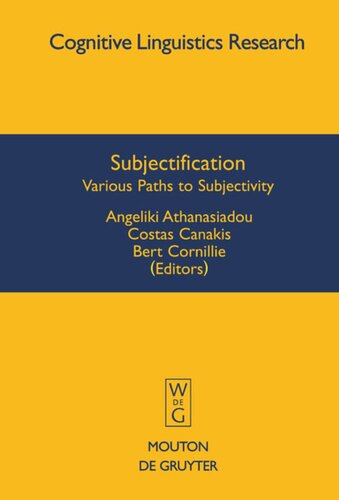

Most ebook files are in PDF format, so you can easily read them using various software such as Foxit Reader or directly on the Google Chrome browser.
Some ebook files are released by publishers in other formats such as .awz, .mobi, .epub, .fb2, etc. You may need to install specific software to read these formats on mobile/PC, such as Calibre.
Please read the tutorial at this link: https://ebookbell.com/faq
We offer FREE conversion to the popular formats you request; however, this may take some time. Therefore, right after payment, please email us, and we will try to provide the service as quickly as possible.
For some exceptional file formats or broken links (if any), please refrain from opening any disputes. Instead, email us first, and we will try to assist within a maximum of 6 hours.
EbookBell Team

5.0
68 reviewsSubjectification is a widespread phenomenon and has emerged as a most pervasive tendency in diachronic semantic change (Traugott) and in synchronic semantic extension (Langacker). Its importance is increasingly valued despite the fact that it is an area that has been treated differently by different scholars. One of the book's objectives is to generate a clearer understanding of the two major models of subjectivity, to see where they can meet but also where intrinsic differences present barriers to any integration. Another objective is to speculate on whether the notions of subjectivity and subjectification have reshaped our understanding of grammar.
The goals of the volume are the following: